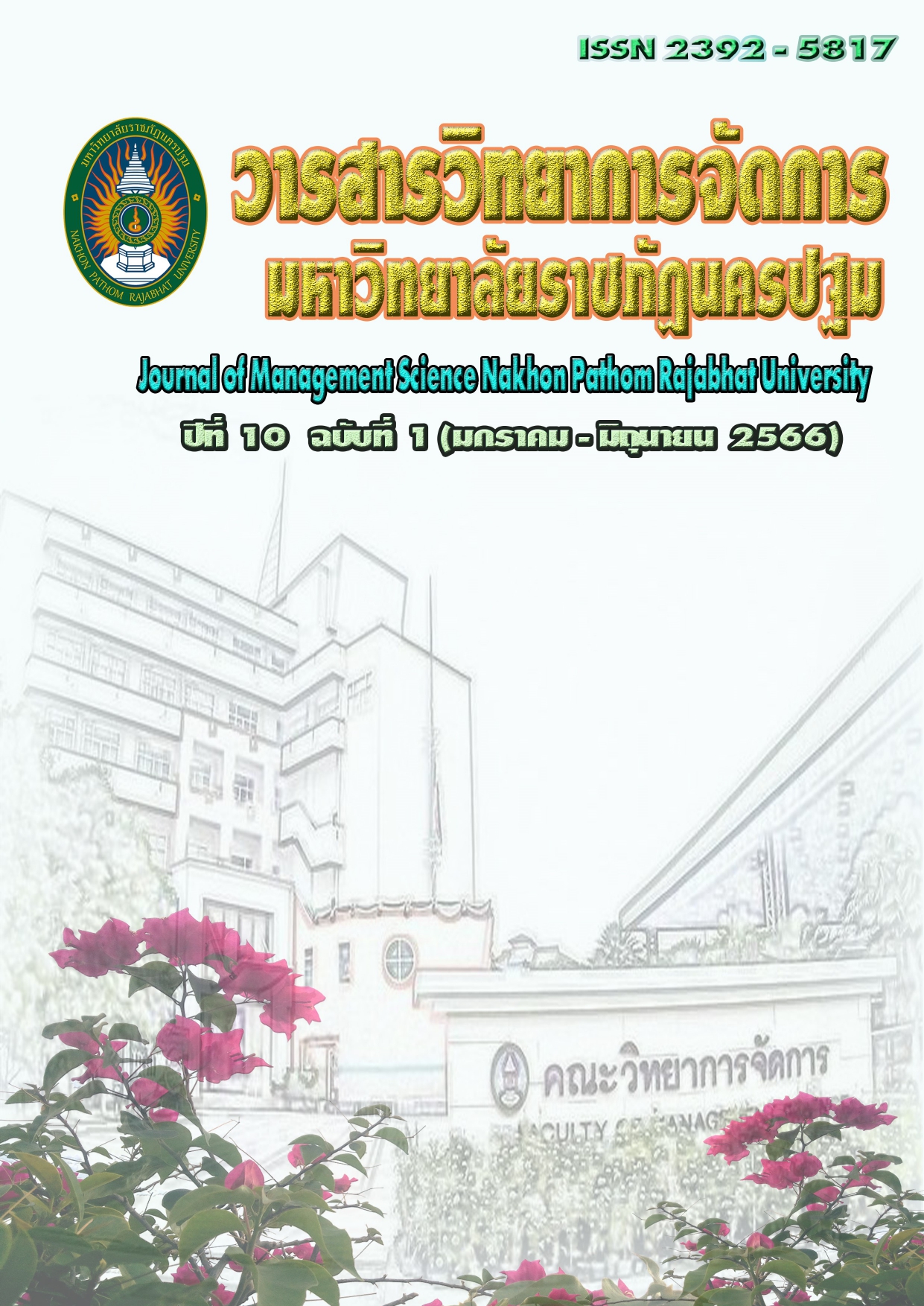The Causal relationship affecting entrepreneur printing product label business competitive advantage in Thailand
Main Article Content
Abstract
This research aims (1) to study the causal factors influencing the competitive advantage of the label printing business in Thailand; (2) to study the conformity of the structural equation model of the relationship of competitive advantage factors and the empirical data; and (3) to develop a competitive advantage model of label printing entrepreneurs in Thailand. This research is mixed method research. For the quantitative method, this research employed a stratified random sampling method from a population of 1,641. The sample size was determined according to the criteria of Hair et al. The sample group consisted of 400 label printing entrepreneurs. For the qualitative method, this study employed a purposive random sampling method for 15 people, including entrepreneurs and experts. The tool used for collecting data was a questionnaire. The statistics used in this research were percentage, mean, standard deviation, and structural equation model analysis by LISREL software.
The results indicated that: (1) the business agility, productivity enhancement, business innovation management, supply chain performance, competitive advantage that directly influenced the competitive advantage which is consistent with the established research hypothesis, a harmony index of competitive advantage factor correlation; (2) the model harmonized with the empirical data. The six harmonious indices that passed the acceptance criteria were the index values of X2/df = 3.616, CFI = 0.910, GFI = 0.832, AGFI = 0.779, RMSEA = 0.0100, and SRMR = 0.017. The structural equation modeling well suited to the empirical data, namely index values of X2/df = 1.159, CFI = 0.996, GFI = 0.957, AGFI = 0.920, RMSEA = 0.025, and SRMR = 0.010.; and (3) the competitive advantage of label printing entrepreneurs in Thailand consists of key elements including business innovation management, supply chain performance, business agility, and productivity enhancement.
Article history: Received 4 April 2022
Revised 23 May 2022
Accepted 25 May 2022
SIMILARITY INDEX = 4.96 %
Article Details

This work is licensed under a Creative Commons Attribution-NonCommercial-NoDerivatives 4.0 International License.
The views and opinions of the article appearing in this journal are those of the author. It is not considered a view and responsibility of the editorial staff.
References
ทวีเกียรติ ประพฤทธิ์ตระกูล. (2563). ตัวแบบการจัดการองค์การเพื่อความได้เปรียบในการแข่งขันในอุตสาหกรรมไฟฟ้าและอิเล็กทรอนิกส์. วิทยานิพนธ์ปริญญาดุษฎีบัณฑิต, มหาวิทยาลัยสยาม.
สำนักงานส่งเสริมวิสาหกิจขนาดกลางและขนาดย่อม. (2563). รายงานสถานการณ์วิสาหกิจขนาดกลางและขนาดย่อม ปี2556และแนวโน้มปี 2557. กรุงเทพมหานคร: สำนักงานส่งเสริมวิสาหกิจขนาดกลางและขนาดย่อม.
อนงเยา พูลเพิ่ม. (2562). ปัจจัยที่มีอิทธิพลต่อประสิทธิภาพในการปฏิบัติงานของพนักงานบริษัทแอ็ดวานซ์ แพคเกจจิ้ง จำกัด. การค้นคว้าอิสระปริญญามหาบัณฑิต, มหาวิทยาลัยราชภัฏพระนครศรีอยุธยา.
Babaei, H., Ramesani, A., and Khanuki, A. A. (2013). Developing a model for agility of business organizaitons based on supply chain processes: A case study of automobile industry in Iran. Australian Journal of Basic and Applied Sciences, 7(4), 750-759.
Christopher, M. (2000).The agile supply chain: competing in volatile markets. Industrial marketing management, 29 (1), 37-44.
Christopher, M. and Towill, D. (2001). An integrated model for the design of agile supply chains. International journal of physical distribution and logistics management 31(4), 235-246.
Christopher, M., and Peck, H. (2004). The five principles of supply chain resilience. Logistics europe, 12(1), 16-21.
Dekkers, A. H. (2006). Measuring the agility of networked military forces. Journal of battlefield technology, 9 (1), 19.
Falasca, M., Zobel, C. W., and Cook, D. (2008). A decision support framework to assess supply chain resilience. In proceedings of the 5th international ISCRAM Conference, 596-605.
Goyal, S., and Pitt, M. R. (2004). Business continuity planning as a facilities management tool. Facilities, 22 (3/4), 87-99.
Gunasekaran, A., Patel, C. and McGaughey, R.E. (2004). A framework for supply chain performance measurement. International journal of production economics, 87(3), 333-347.
Hair, J.F., Anderson, R.E., Tatham, R.L., and Black, W.Ç. (1998). Multivariate data analysis. Upper Saddle River, NJ: Prentice Hall. 103-124.
Lindström J., Samuelsson S., Hägerfors A., (2010). Business continuity planning methodology. Disaster prevention and management, 19(2), 243 – 255.
Lindström, T., & Aulin, C. (2014). Market and technical challenges and opportunities in the area of innovative new materials and composites based on nanocellulosics. Scandinavian Journal of Forest Research, 29 (4), 345-351.
Mansfield, E. (1968). Industrial research and technological innovation: An econometric analysis. New York: W. W. Norton.
Murphy and Cold. (2009). Attitude.Retrieved March 9, 2021 from http://www.Novabizz.com/
NovaAce/Attitude.htm.
Nohria, N., and Gulati, R. (1996). Is slack good or bad for innovation? Academy of Management Journal, 39(5), 1245-1264.
Ponomarov, S. Y. and Holcomb, M. C. (2009). Understanding the concept of supply chain resilience. The international journal of logistics management 20(1), 124-143.
Porter, M. E. (1985). Competitive advantage: Creating and sustaining superior performance. New York: The Free Press.
Saunila, M. (2014). Innovation capability for SME success: Perspectives of Financial and operational performance. Journal of Advances in Management Research, 11(2), 163-17
Utterback. (2015). Quality Management. Bangkok: Chulalongkorn University Printing House.


